Reliable Electric: Power platform customer story

“PowerApps gives me the ability dream up a business system, draw it, then make it at much quicker speeds that I could have done by learning to program.”– Lars Peterson, General Manager (and app maker), Reliable Electric
Lars Peterson is a General Manager at Reliable Electric, Canada, who had no prior app development experience before using the Power platform. He taught himself PowerApps, Microsoft Flow and SQL, and used the Power platform to transform core business processes, such as creating daily work order estimates. This replaced a legacy system for which the company was paying $2,000 for a single seat, and was not user friendly or customizable to meet their exact needs.
Business scenario
Reliable Electric specializes in the design and installation of integrated electrical projects in high-end homes. To generate a work order proposal for a customer, they need to go through the process of analyzing drawings and determining the materials required to accomplish the design. The term used to define this process in construction and engineering projects is a takeoff. To put together a proposal, the estimator at Reliable Electric needs to generate accurate price estimates for all the takeoffs in a project. This requires a complex set of inputs followed by a lookup of product information and a series of calculations to generate a final customer-ready proposal with accurate estimates.
Before Power platform – business process, challenges and opportunities
Reliable Electric had purchased a legacy desktop-based software called Accubid. The process was as follows:
– A contractor would provide the plans
– Estimators would do the takeoffs and enter all the information into Accubid
– All information from Accubid was then copy-pasted into an estimation spreadsheet to get a final proposal

This solution had several challenges:
– According to Lars, “the interface was terrible, was hard to view and change certain data elements.”
– The output from Accubid had to be copy-pasted into a spreadsheet to get a proposal that met their needs.
– Only one person could use the tool at a time. Each additional seat was $2000, which was cost prohibitive.
– They needed a solution that provided them control over their data, with a user interface that was easy to use.
Power Platform solution – Work order estimation app
In a prior role, Lars Peterson was a small business consultant who researched multiple tools to help his customers but found himself almost always recommending Excel. He tried Access but felt it was complex and not something he could leave with the customer to maintain on their own. After joining Reliable Electric, he spent six months researching several estimation software solutions. He did not find any off-the-shelf tools that met his exact needs and decided to build a solution on his own using PowerApps and Microsoft Flow, with SQL as the backend. He found out about PowerApps through his Office 365 subscription. He chose it over other competitive offerings due to the rich visual appeal and depth of customization that was possible. He calls the solution “Estimating the Database” or ED for short. The application has been live in production since December 2017 and used daily by Estimators, Project Managers and Sales Representatives in the organization. It actively manages over 70 projects at any given point in time.
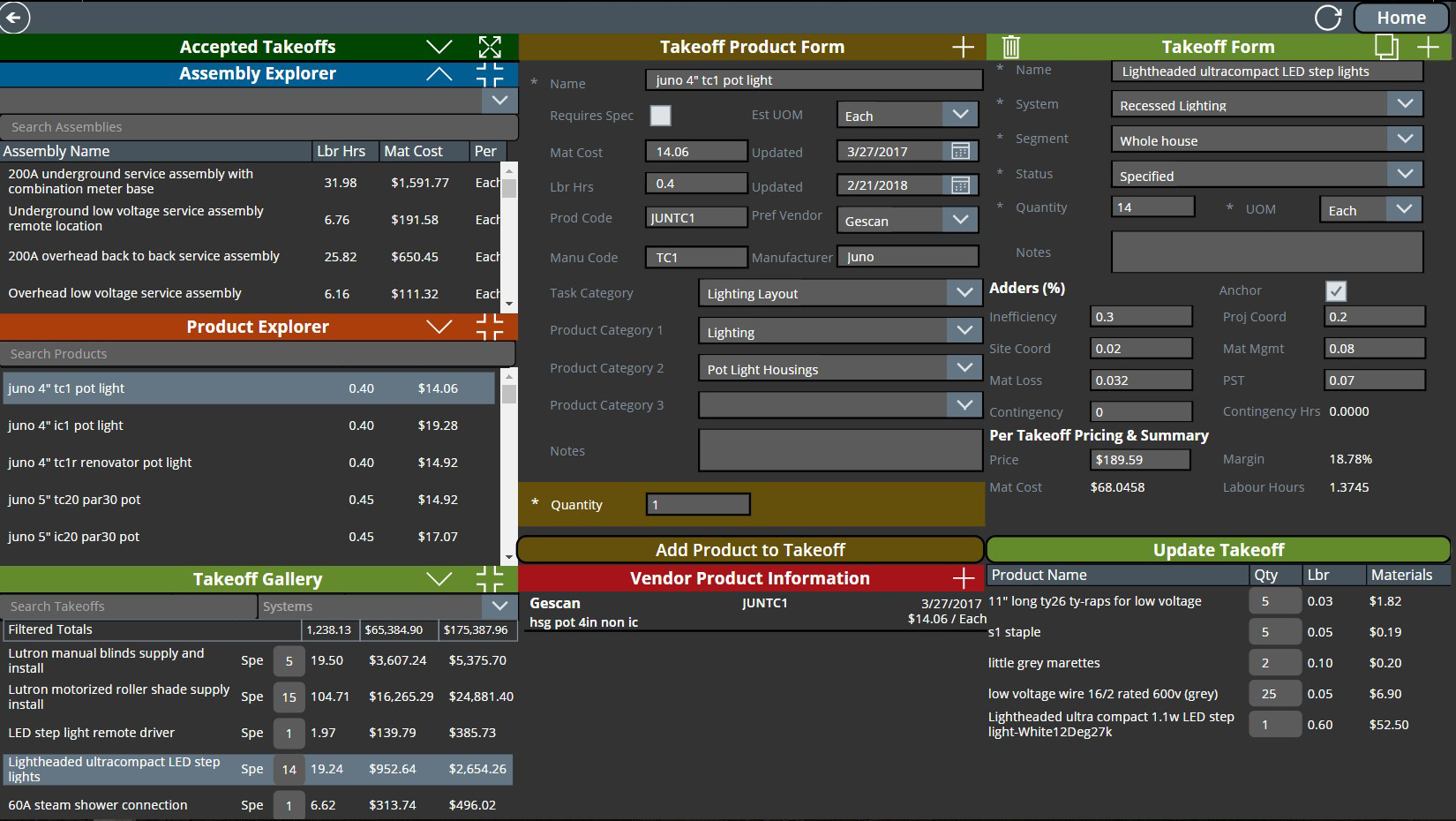
Screenshot of estimator app
PowerApps: Estimators use a PowerApp on their desktop to manage the entire estimation process. They use predefined assemblies that have been customized for the business. These assemblies are basically takeoff templates that have a collection of products. The assembly is attached to a project and becomes a takeoff – an assembly with a quantity. The cost and labor associated with each takeoff is rolled up based on the products in the takeoff. Each takeoff is then priced based on this roll up with labor costs and other adjustments factored in. All of this happens automatically based on the defaults set in the estimate and can be customized as needed. The final output is stored in a SQL database. An Excel spreadsheet that is directly connected to the database is used to generate the final product list or bill of materials along with the proposal summary.
Microsoft Flow: Flows are used to trigger stored procedures in SQL and notify the Director of Projects & Design whenever a new product is added, or a new assembly created.
SQL Azure: All data for assemblies, product lists, prices and estimates are stored in a SQL Azure database.
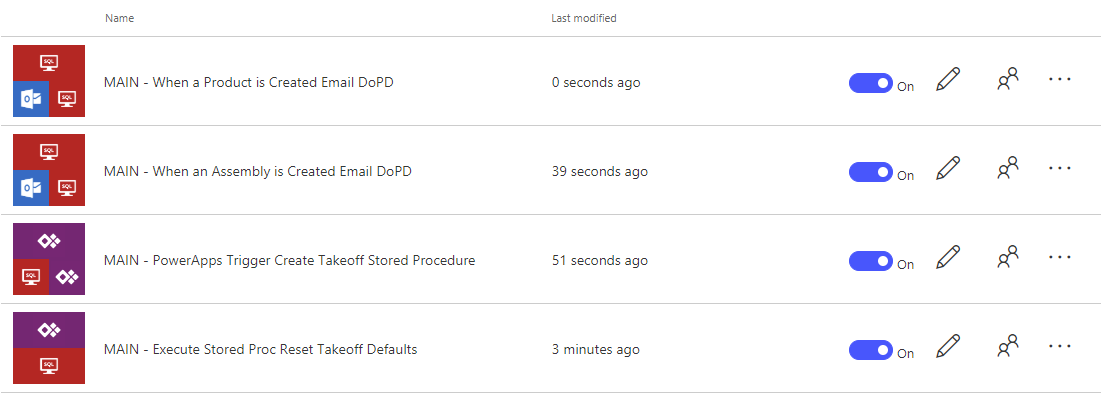
Screenshot of Flows
Benefits from using the Power platform
- Reduced the time for data entry by half which allowed plans to get priced quickly
- Electricians found the app easy to learn and use, as compared to the old Accubid solution
- No more need for copy-pasting data, the spreadsheet is directly connected to the database which ensures that everyone always has accurate information
- They are in full control of the data – it is instantly available and can iterate through quickly

Solution architecture
The app uses SQL Azure for storing information about Assemblies, Products, Estimates and Proposals involved. The PowerApps application provides easy to use templates to key in the receptacle, view the assemblies and products involved, modify if needed per the customer’s request and generate an estimate for the client
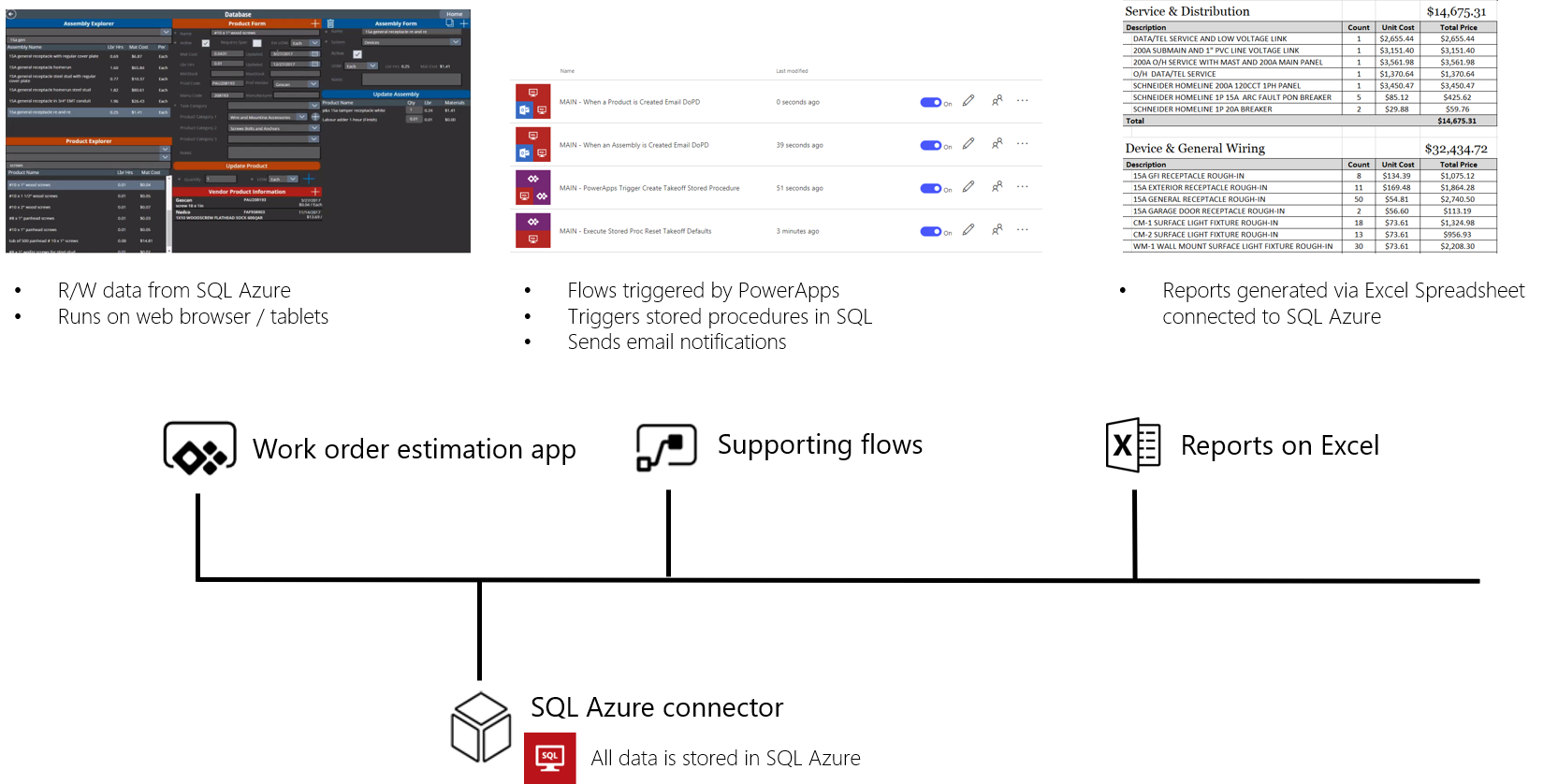
High level architecture diagram of the Power platform solution
Looking beyond a single app
Encouraged by the success of the estimator app, Lars has built several additional solutions. His goal is to modernize all instances where they use siloed spreadsheets for critical business processes and replace them with a PowerApps solution. He has brought on an additional resource to work on the backend SQL database layer, while he continues to develop the PowerApps Canvas apps.
- Employee Engagement: A phone app used to submit feedback, report vacation, 1-on-1 forms, and manage employee information.
- Product Updater: A tablet app built to edit product lists and vendor product information.
- Sales Tracker: A desktop app to enter and track opportunities and projects. Setting this up to link to QuickBooks through an Azure SQL synced database.
- Asset Tracker: A phone app that tracks all tools in the company. Plan to use the barcode feature in this app and populate it full of tools.
Additional screenshots
Work order estimator
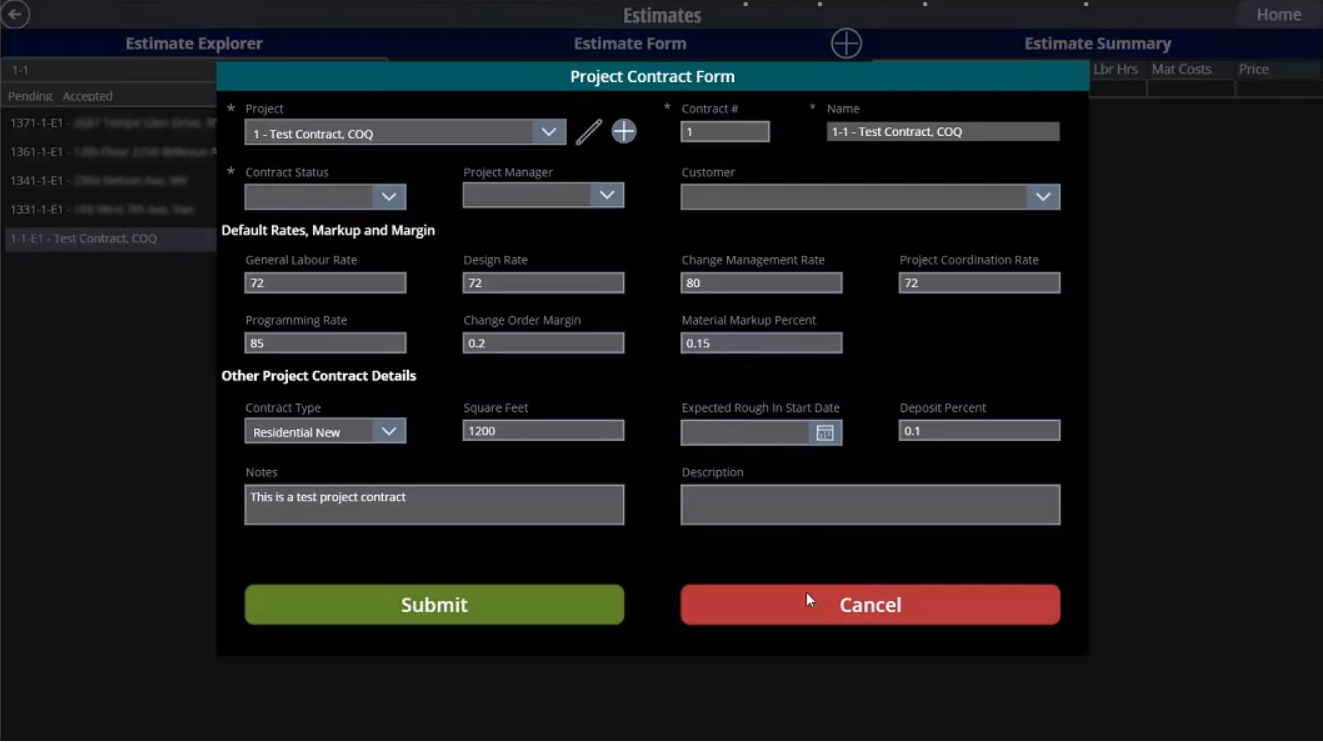
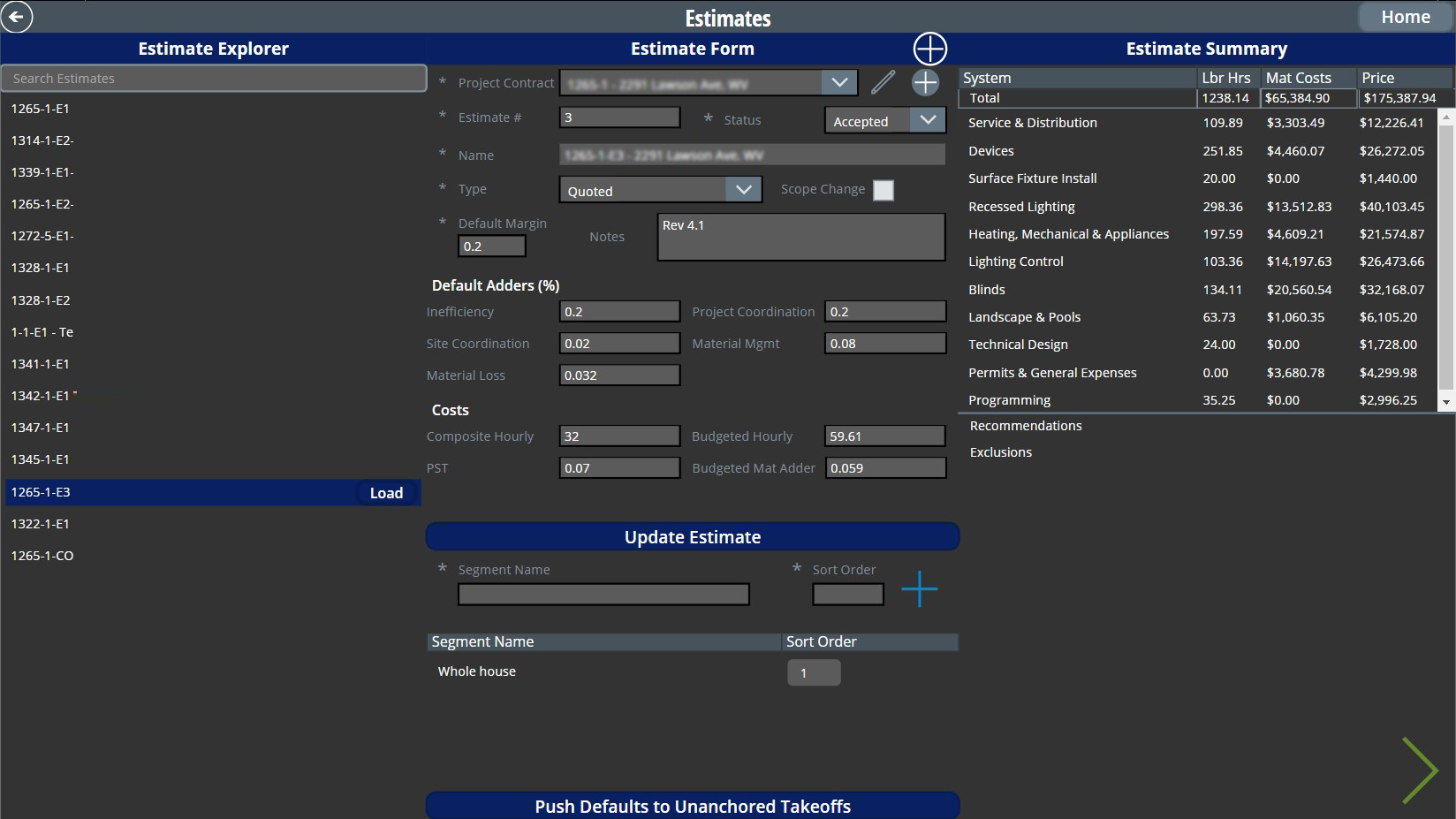
Mobile apps – employee requests, asset tracking
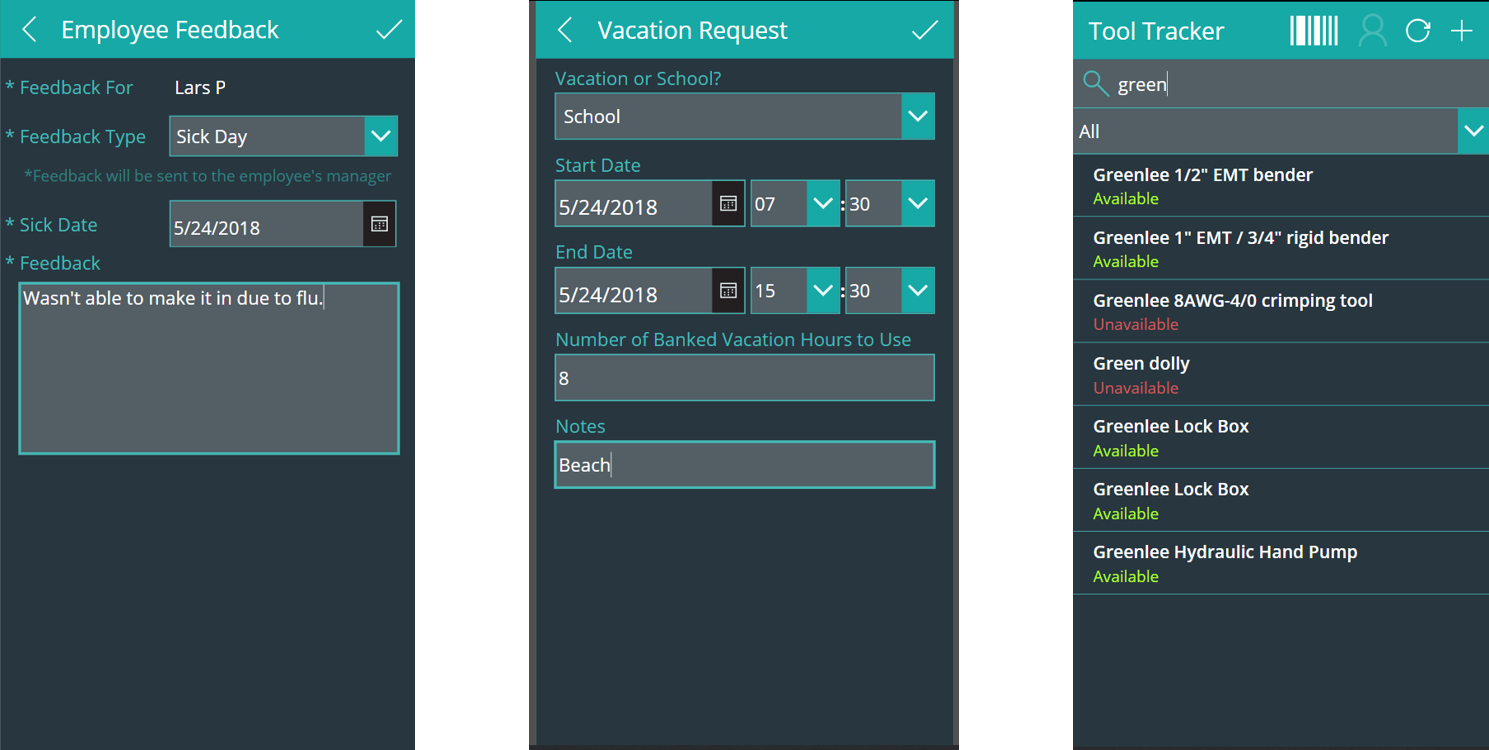
Product updater

Sales tracker
![]()



